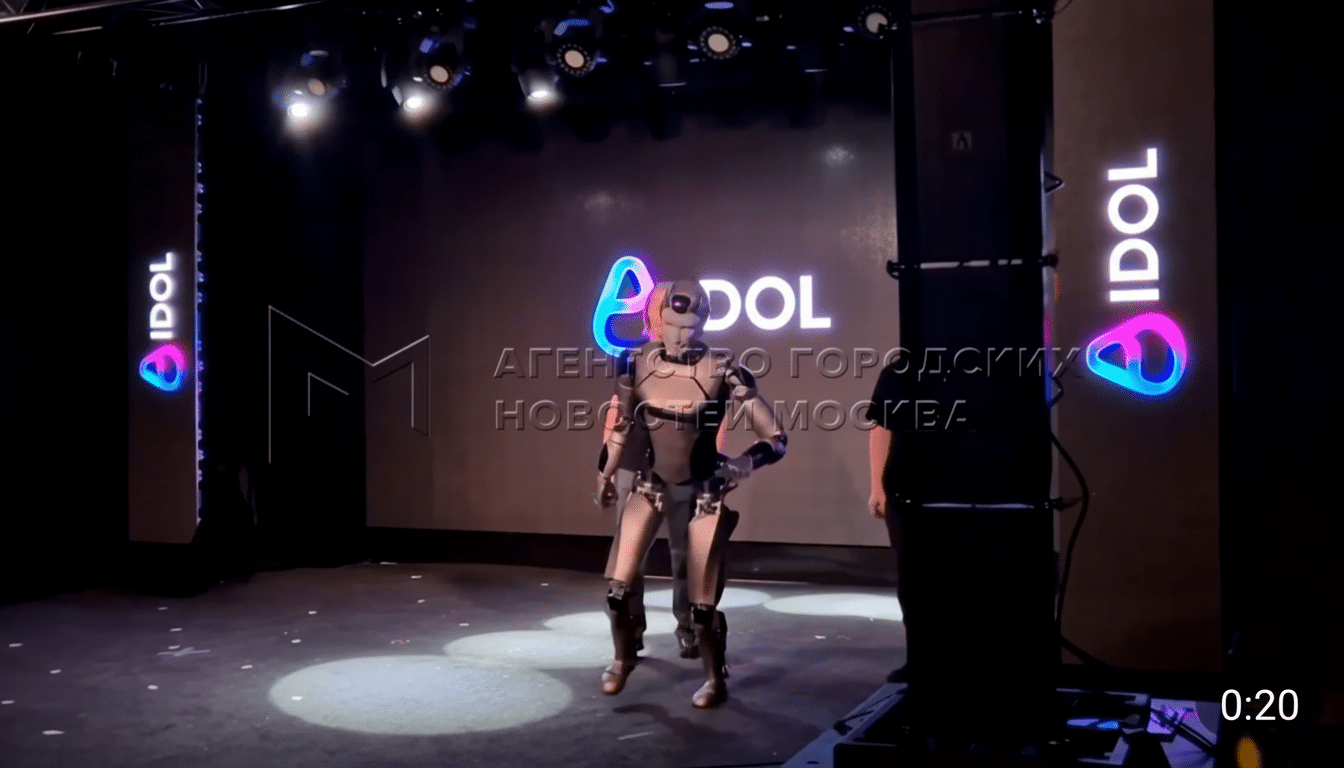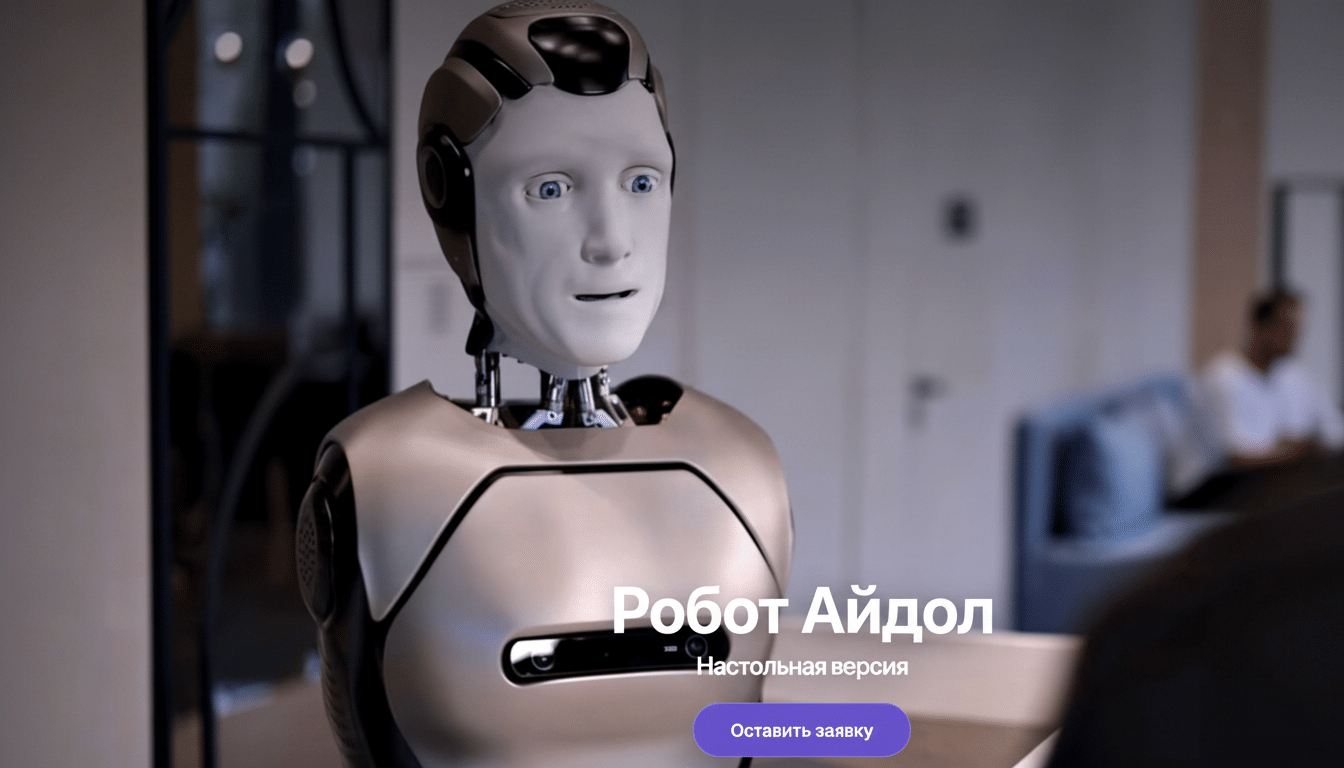Russia’s quest to show off a homegrown humanoid backfired after AIdol, a new bipedal robot from the startup Idol, lurched out and fell headfirst in front of a packed room at its public debut in Moscow. The mishap briefly stopped the demonstration as staff members ran onstage, covered the machine with a black cloth, and made an attempt to reset it.
A Showpiece That Slipped During Its Moscow Debut
The launch was intended to underscore Russia’s dreams of greatness in advanced robotics, with AIdol promoted as a domestically produced platform for performing service and industrial tasks. It stiffly waved a greeting, then took a few faltering steps and tipped over, sending one of its pieces of outer shell skittering across the floor. Government engineers later informed state media that the problem arose from calibration issues in balance and control software, rather than a mechanical failure.

The fall of AIdol has also been framed by its chief executive, Vladimir Vitukhin, as a learning experience. The team will now bake the real-world data straight into the next update of the software. That process itself mirrors how robotics programs these days iterate: log the failure, tune the controller, and repeat with more stringent tests until you are back on stage.
What Likely Went Wrong With AIdol’s Stage Debut
Humanoids remain unforgiving machines. Tiny errors in sensor fusion — integrating signals from IMUs, joint encoders, and foot force sensors — can throw off a robot’s estimate of where its center of mass is actually located. If that estimate drifts while walking, the controller can plan steps that look stable on paper but aren’t on a slick stage.
For most bipeds, a controller based on the linear inverted pendulum model and zero-moment point constraints is used to maintain the “virtual” center of pressure within the support area of foot stance. If your initial calibration is off, or the floor is slipperier than you expect, or the step is a smidge mistimed, you can easily push it out of that stability margin. Even the lighting or glossy floors that are a feature of many launch events can confuse depth cameras and change foot traction — two of the variables that robots deal with much more consistently in the lab than they do under overzealous spotlights.
There’s also the mundane: just one misseated connector, or a minor latency spike in the networked control loop, and it can all too easily lead to a very public plummet. The solution usually requires recalibrating joints, balancing gains, and adding very conservative gait parameters for demos, etc.
Russia’s Play in a Crowded Field of Humanoid Robotics
Idol’s AIdol comes in the broader context of a Russian push to localize advanced hardware. The country has sent humanoids to space before — the most prominent being the FEDOR robot, which performed tasks on the International Space Station — but reliable and long-running commercial platforms remain scarce. Idol sees AIdol as a sensible machine for logistics and service functions rather than pure lab curiosity.
The Age of Humanoids has arrived.
小竜)ゞ⌒☆

The race of humanoids across the universe is being developed.
Tesla has shown gradual progress with the Optimus, Agility Robotics is testing its ground-based robot Digit in warehouses, and Figure AI has drawn big-name investors to its Figure 01 platform. Venture trackers like PitchBook and reporting from The New York Times indicate investment in humanoid-focused startups recently surpassed a tasty $1B, suggesting intense faith that general-purpose robots could shock a vast market into existence as labor shortages continue to edge higher.
Meanwhile, the International Federation of Robotics says annual installations of industrial robots have overall hit record highs around the world, proving pervasive demand for automation before humanoids even go mainstream. With that as the background, Russia’s bid to deploy a domestic humanoid platform is strategically important even if the debut was rocky.
Falls Are Part of the Process in Building Humanoids
Stage spills are damaging to one’s ego, but not out of the ordinary. Honda’s Asimo famously fell down during a demo, and top labs have released “blooper reels” of costly machines falling repeatedly to the floor in routine testing. In locomotion research, failure data is gold: it uncovers edge cases — unexpected foot slip, lateral pushes, timing jitter — that one doesn’t see in simulation.
The critical issue is how soon teams can turn a fall into increased robustness. State-of-the-art programs reduce perception-to-control latency, add contact sensing in the feet, and use model predictive control to predict destabilizing events one or two steps ahead. After a few cycles, real-world falls plummet and robots come to expect uneven floors, light nudges, and awkward turns with fewer surprises.
What to Watch Next as Idol Iterates on AIdol’s Design
For AIdol, the next goal isn’t a more spectacular stage walk but a silent show in which the robot continually stomps out a short route, turns, and rights itself after a nudge without theatrics. Look for Idol to expand testing facilities, fine-tune balance controls, and slow down gait speeds as the team validates sensor calibrations.
If Idol can already demonstrate reliable, rudimentary pick-and-place actions, elevator hopping, or cart fetching, the tale of rising from viral bumble to serious contender will change. As of now, the message is clear: in humanoid robotics, one cautious step ahead is worth five bold ones and a fall.

